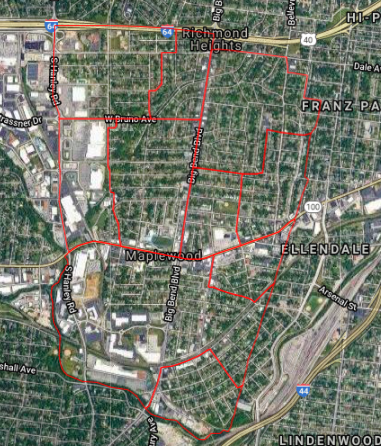Connecting class content in schools to the experiences of students is an important part of learning. In our middle school we do this through an expeditionary model. This means that we spend lots of time getting our students outside of the classroom and into the world. In a "normal" school year we would take our students to forests, streams, ponds, and cities. We would ride bikes, busses, and trains to explore and make connections between our lessons in class and the "real world." Like many schools across the country, COVID has changed our educational practice for the time being, restricting us to a virtual world. Fortunately, the virtual world can still provide students engaging and authentic opportunities for experiential education.

This fall, my middle school sustainability class is conducting a virtual tree canopy study of our urban school district using a suite of tools called I-Tree (https://www.itreetools.org/) produced in collaboration with the USDA Forest Service. Studies link urban trees with improved air quality, higher property values, lower energy costs, and even reduced crime. With this tool, my students are comparing the different surrounding neighborhoods and looking for trends that might reflect issues of economics and social justice. We are using the US Census Data Portal (https://www.census.gov/data.html) to find housing, economic, and demographic data to answer questions and test ideas about urban tree cover. Students have remarked that they are the only ones who know the relationship between tree canopy and average monthly housing costs in our area. We will apply our findings to policy and action for future urban tree planning and planting. The project is hands on and connects us with our community at a time when face to face connections is not possible. The work the students are doing is meaningful and is a step in making a more sustainable, livable city.

Fortunately there are lots of citizen science opportunities that we can investigate from our computers. Many of them can be done as an action component to a lesson or as a bigger part of an interdisciplinary exploration. What's great is that they allow us to learn about the world while contributing to its sustainable future. Many projects focus on our polar regions and cover a wide range of science and social studies content.
The citizen science platform, Zooniverse (https://www.zooniverse.org), has several polar research projects that allow classroom citizen scientists to play an active role in researching these far flung locations. Penguin Watch, for example, engages users to participate in identification and census tasks from drone and satellite photographs.

Seal Spotter, from Phillip Island Nature Park, uses drone footage of seal colonies and citizen scientists to collect data on the park's colonies over time. https://natureparksresearch.com.au/sealSpotter
You might want to check out The Polar Collective (http://www.polarcollective.org) - an organization that supports numerous citizen science projects from sea ice to cloud density. These are more advanced than the point and click tasks of the various "spotter" programs but they offer online training materials for the more accessible projects.
There are so many resources out there that can bring research into the virtual classroom. I would love to hear your ideas for engaging students in science research while in remote learning environments. Please share your ideas, tips, and advice in the comments!


Comments